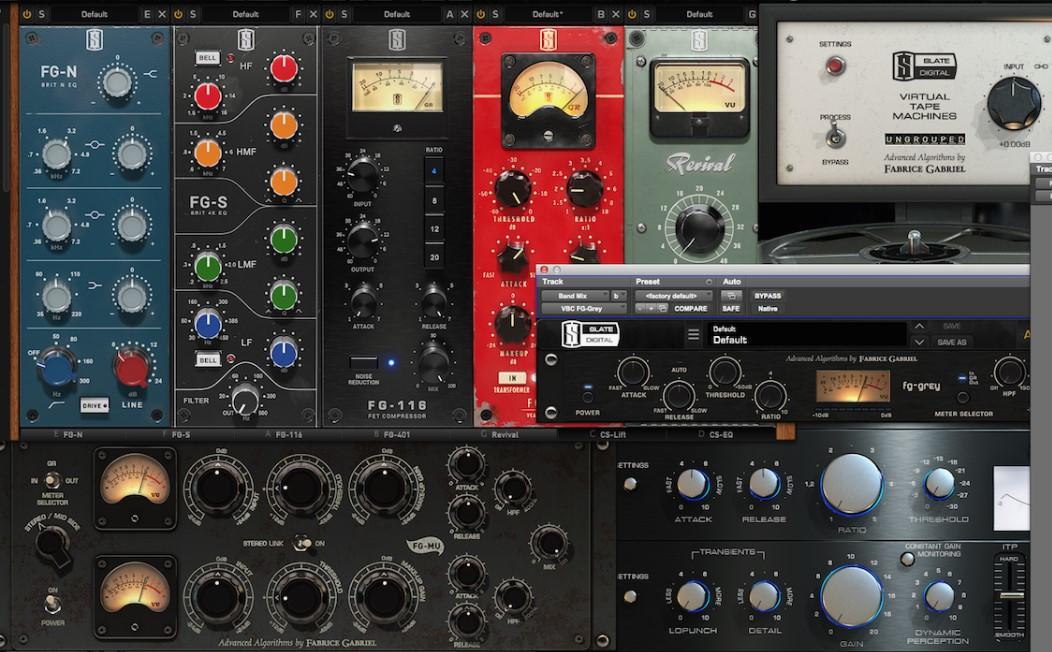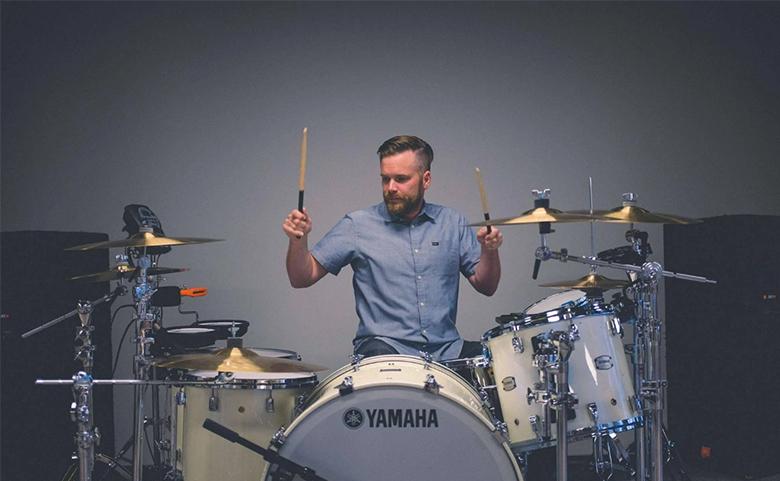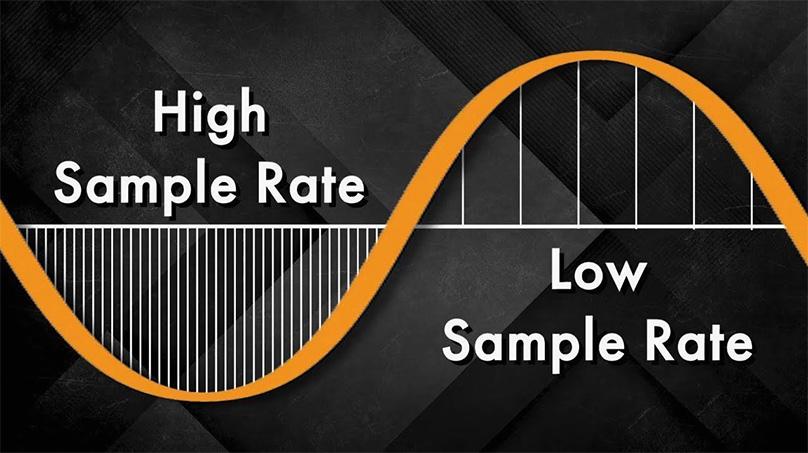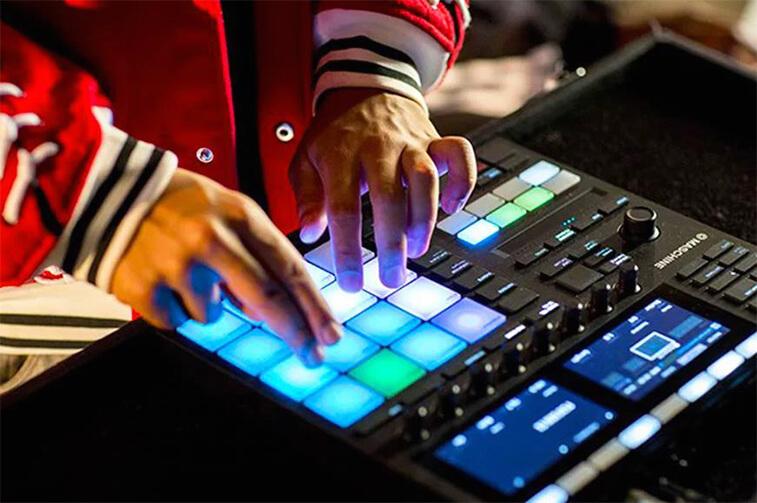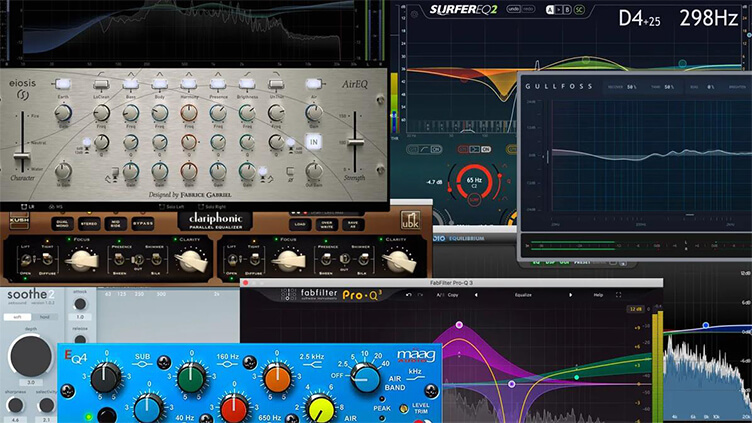Music NFT
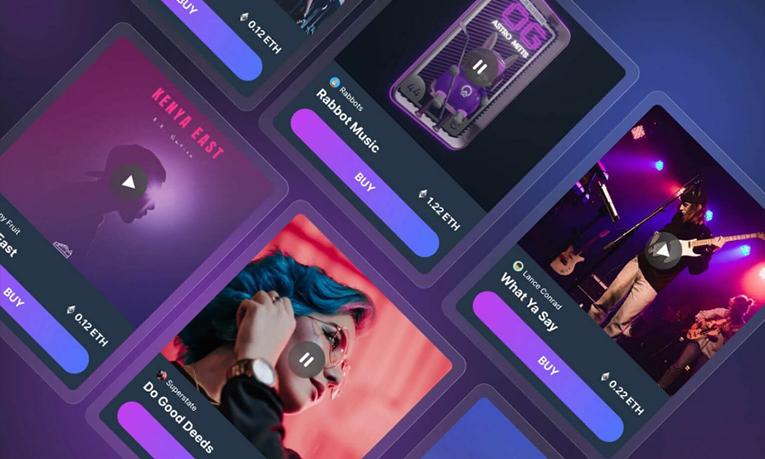
Musicians have begun selling their tracks as NFTs, bringing significant changes to the music industry and offering an alternative to poorly paid streaming platforms. Growing awareness of the potential of NFTs among music market participants has led some famous artists to actively use these technologies. While NFT marketplaces already offer music NFTs, some innovative startups are developing specialized platforms aimed primarily at music content, thereby creating competition for traditional streaming services.
What is NFT?
Neglecting all the technical aspects and complexities of how NFTs work, they are based on the concept of digital certificates of authenticity. These certificates certify ownership of a specific NFT, which is unique and cannot be replaced. Like any cryptocurrency, NFTs are stored on a blockchain, ensuring they are unique and cannot be divided.
NFTs were initially associated primarily with digital art and collectibles, such as Bored Ape Yacht Club or CryptoPunks. However, the scope of NFTs is much broader: they can represent anything from videos, images and music tracks to physical objects and even plots of land in the real or virtual world.
NFTs in the music industry
There are already professionals in the music industry who have realized the comprehensive potential of NFTs and have begun to capitalize on it by offering their musical works directly to consumers through tokenization. NFTs have been especially active in the electronic dance music (EDM) environment, where artists have pioneered this innovation.
One of the iconic moments happened in February 2021, when American DJ and producer 3lau tokenized his album “Ultraviolet”, releasing it in the form of 33 NFTs and raising $11.7 million. Other artists followed suit, including big names like The Weeknd, Shawn Mendes and Grimes. In addition, Snoop Dogg, after purchasing his Death Row Records label, announced plans to transform it into an NFT label, continuing the trend of NFT integration into the music industry.
A new way to connect artists and fans
Thanks to the decentralized nature of blockchain and the technology behind NFTs, these tools are an ideal way for artists to connect directly with their fans. NFTs open up opportunities for musicians to directly monetize their creations, allowing them to sell music directly to their listeners without the need for intermediaries.
Since the rise in popularity of NFTs, music has been sold on various NFT platforms, but new sites are now popping up, some of which specialize exclusively in music NFTs. Examples of such platforms include Royal and Audius. Of particular note is the startup Sound.xyz, a platform focused exclusively on music NFTs, the goal of which is to help emerging artists monetize their creativity through the creation of NFTs. LimeWire is also reported to be returning, but as an NFT trading platform, with a focus on music tokens. Despite this, LimeWire plans to offer other types of NFTs beyond just music content.
The flawed music industry model

In the modern music world, the price of music has dropped significantly as a result of technological developments, especially with the advent of the MP3 format and the spread of the Internet. These changes have led to the explosive growth of streaming services and made accessing music more convenient than ever. Today, streaming accounts for about 80% of all music industry revenue. However, according to a Rolling Stone report, about 90% of streaming revenue accrues to the top 1% of the industry. Artists now account for about 12% of total revenues, an improvement from 7% before the Internet era, but most musicians still face difficulty building sustainable careers through streaming platforms.
This is due to the meager payments for each stream listened to. For example, Spotify pays artists between $0.003 and $0.005 per stream, meaning they need to rack up about 16.67 million plays to earn $50,000. Based on the data, just 13,400 artists could earn $50,000 a year through Spotify, highlighting the scale of the music industry’s revenue distribution problem. While Spotify is criticized with good reason, it is important to look at global trends and look for new ways forward for musicians.
Start tokenizing your music into NFTs
By turning their music into NFTs, musicians open up the possibility of releasing exclusive, collectible versions of their tracks. By asserting their uniqueness and rarity, artists increase the value of their music in the marketplace.
With NFTs, artists are able to bypass intermediaries such as music labels to distribute their tracks. By creating a music NFT, the artist records the authorship and creation date of the track on the blockchain, which ensures transparency of the origin of the music. It also allows you to sell music directly to fans and earn revenue from subsequent resales on the secondary market.
With music NFTs, artists can earn a decent income with just a hundred dedicated fans, rather than having to reach millions of listeners. The process of creating NFTs is accessible and does not require a significant investment, with many platforms offering NFT creation for free, making this route especially attractive to musicians.
Will NFTs Overtake the Music Streaming Industry?

Music NFTs have definitely strengthened the position of cryptocurrencies in the music industry, fitting into the current trend where streaming services dominate. This encourages musicians to look for new ways to monetize their creativity, in particular through the creation of NFTs.
It’s still too early to know whether music NFTs will begin to directly compete with streaming services, but the trend toward introducing non-fungible tokens into the music space is gaining momentum. Many famous artists are already launching their NFTs, indicating a possible direction for the industry. The question of the coexistence or dominance of one of the models remains open.
Activity in the NFT market has already become a phenomenon, with new crypto market entrants and digital artists looking to sell their work. Dedicated platforms for serious digital art investors and collectors already exist, but aspiring musicians should carefully consider the pros and cons before joining the NFT movement.
Which musicians should get into NFTs?
Turning your creativity into an NFT can be an effective way to monetize it in the following cases:
- If you are a musician or artist with a cult status, whose works or unique items always attract the attention of collectors;
- If your audience is familiar with the world of cryptocurrencies, owns cryptoassets and is prone to risky investments. An advantage here goes to musicians who are popular in circles, for example, IT specialists from San Francisco;
- If you are a musician closely associated with digital art. The NFT boom began with digital art, especially visual art. Modern NFT platforms are more like 3D galleries than music charts. Thus, if a musician pays special attention to the visual design of his work, his work may become in demand on the NFT market. For example, releases by the Russian artist Pixelord, who has already experimented with NFTs, or projects by musician Ilya Mazo, who created the game “SHHD: WINTER,” may be of interest to NFT buyers;
- If you are a particularly lucky risk investor. Let us remember that at the beginning of its existence, Bitcoin was perceived by experts as an extremely controversial idea, but today its value is estimated at millions of rubles. Those who took the risk of investing in cryptocurrencies ten years ago are unlikely to regret their decision today. A similar scenario is possible with NFTs.
What can be sold as an NFT token?
Your digital creation can easily be transformed into a masterpiece of digital art, associated with a unique non-fungible token (NFT) and offered for public auction. In addition to the token itself, there may be physical artifacts attached, as well as various types of promises and commitments that provide additional value.
You can create not just one NFT, but an entire collection of copyrighted copies of one art, emphasizing their exclusivity and authenticity. In the NFT market, series of art objects are especially valuable, attracting more attention from buyers than individual tokens. An example of this is singer Grimes, who has put up for sale a series of her works created in collaboration with her brother, digital artist Mac Boucher, complete with original music.
The growing popularity of NFT auctions opens up unlimited opportunities for artists to imagine and realize a variety of forms of their art as potential auction items, pushing the boundaries of the traditional perception of art objects.
A music track or full-length album can reach unprecedented heights in the world of NFTs, and the achievement of American DJ and electronic dance music producer 3Lau is a prime example of this. His album Ultraviolet, released in 2018 and available on all streaming services, earned him over $11 million through the sale of NFT tokens associated with it. For those who purchased the most exclusive tokens, limited vinyl editions, unreleased tracks and unique mixes were provided, and the most valuable offer included the opportunity to collaborate on a new song directly with 3Lau.
The musician also pioneered the innovative use of NFTs by founding a private marketplace where the original owners of his NFTs could resell their tokens. Under the terms, 3Lau receives a share of each resale transaction of its issued tokens, confirming a unique and mutually beneficial approach to monetizing music content.
Album cover design. Images in .jpg format, animations in .gif format, or even short video clips showing the cover of an issue can be integrated into an NFT. Linkin Park co-founder Mike Shinoda took this approach when he auctioned NFTs on the Zora platform for a series of animated versions of the artwork for his newest single, “Happy Endings,” and managed to earn $6,600 from selling ten copies. This marks the first time an artist under contract to a major music label has participated in the NFT market.
Music rights revenue through NFTs represents one of the most exciting and mysterious uses of non-fungible tokens in the music industry. In February, Canadian electronic music artist Jacques Green sold an NFT for 13 Ethers that not only included a six-second video of his track “Precise,” but also provided a share of royalties for the use of the song. Jacques Greene is expected to personally contact the buyer to discuss the terms of the revenue share payments, in accordance with Canadian law. Details about the royalty percentage that will be paid to the NFT owner and links to relevant agreements are not provided in the lot description. As a result, this transaction at the NFT auction brought Jacques Green $23 thousand.
Blockchain technology has enormous potential for bringing order to the field of copyright and related rights. Using blockchain to record music track metadata promises transparency in the process of paying royalties to artists and makes it easier to identify copyright holders.
Non-fungible tokens can cover a wide range of objects, including unique physical objects and even concepts that have not previously had a physical embodiment. One of the most notable examples of the innovative use of NFTs is Banksy’s artistic stunt where he converted his destroyed painting into an NFT, demonstrating the new possibilities for art.
It also seems possible to associate NFTs with exclusive versions of music albums, as is done with limited vinyl test pressings or special demos. An interesting proposal could be to create an NFT that promises that a certain music track or album will never be released, turning such a promise into a valuable fundraising item among those who would rather it not be released.
All kinds of virtual merchandise. The world of digital goods and services offers musicians unique ways to interact with their audiences. From exclusive access to new tracks to online concerts, using AR to create custom Instagram masks, personal video greetings, digital badges or even unique digital images, the possibilities are endless. With the advent of NFTs and the digital merchandising craze, platforms like Fanaply are becoming pioneers in selling music merchandise in the US, demonstrating how artists can benefit by selling unique digital products to their fans. This trend is only gaining momentum, opening up new horizons for creative expression and monetization of talent in the digital space.
How to make a release in NFT format?
- Create a wallet to store Ethereum, which will be used to receive proceeds from selling NFTs. Options for such wallets include MetaMask, CoinBase and Rainbow, where registration is quick and does not require any financial investment;
- Upload your music file to IPFS (Interplanetary File System), which will provide content-addressable storage of your work on a decentralized network. This process can be completed for free on the Pinata website by following the detailed instructions available online;
- Selecting the right online marketplace to create and publish your NFT is a key step. OpenSea is a leader among NFT trading platforms, but newcomers may be better off starting with Rarible, a simple and intuitive marketplace where NFTs are easily created and traded. Among other well-known sites it is worth highlighting:
-
- Rarible is an ideal place for beginners, offering an easy NFT creation process similar to uploading a YouTube video;
- Nifty Gateway is a representative platform that has attracted attention due to its high level of exclusivity and the sale of the Grimes collection. The uniqueness of Nifty Gateway is the ability to link not only cryptocurrency wallets to an account, but also traditional bank accounts (for US residents);
- Zora is a young marketplace chosen by musicians like Toro y Moi and Mura Masa to post their works;
- SuperRare is an elite digital art gallery that focuses on high-quality and unique NFTs, which are selected by specialists;
- OpenSea is the largest and most comprehensive NFT trading platform, supporting a wide range of digital assets;
- MakersPlace is an exclusive, invitation-only gallery aimed at serious collectors and artists.
- Post a single item or a complete series for sale. Any digital asset you own, such as an album cover design, can be offered as a single exclusive NFT or as a series of several or even thousands of copies. You determine the circulation of the product, the unique features of each copy, pricing and auction end date. Control over all aspects of the proposal remains with you;
- Inform your fans about the NFT release or try to interest digital art lovers. In Russia, crypto art enthusiasts and NFT fans have already organized a specialized channel on Telegram to discuss such auctions.
And yet: are NFTs a brilliant deception?
It is difficult to answer this question unequivocally, since the value of NFT depends on the buyer’s perception, and all the procedures mentioned in our article are not unchanged: the NFT market is still in its formation stage.
But NFT is already solving important problems:
Financial aspects of digital art. Selling 3D art, video art, computer graphics and other forms of digital art has traditionally been a challenge. An artist can only earn from custom commissions or by selling physical versions of their work. However, the crypto-economy now offers never-before-seen opportunities for monetizing digital works.
The COVID-19 crisis has forced us to think differently about content consumption, a trend that is likely to only intensify as the pandemic ends. We have already adapted to online concerts. But what if an entire digital art gallery could become an exclusive online event?
Transforming music into a digital art form. Musicians’ adaptation to the streaming economy, where income depends on the number of plays on a variety of platforms, has happened relatively smoothly. However, the emergence of NFTs provides additional earning opportunities for those artists who have not yet found their place in the world of streaming services and have an audience willing to financially support them. Discussions continue to rage about how many musicians receive a disproportionately small share of profits from streaming services. The “NFT revolution” comes at a time when talk of a new royalty model has become popular, in which subscription revenues are distributed exclusively to the artists a user has listened to in a month. Soundcloud announced it would be switching to this system starting April 1, suggesting that revenue sharing would be the responsibility of the listener. Fans may find it preferable to support their favorite artist by purchasing NFTs rather than listening to their tracks on a daily basis.
The evolution of blockchain-based streaming services. Independent projects creating music streaming platforms based on blockchain technology have long been outside the mainstream attention of the IT sector, but the surge of interest in NFTs has significantly increased their market prospects. Services such as Rocki, Audius and Emanate, although not yet widely adopted by musicians, labels and audiences, are gaining prominence due to the growing enthusiasm for the use of blockchain in the music industry.
Promotion of charity. In a time when famous artists are successfully selling their works as NFTs and donating the proceeds to charity, this approach deserves praise. This is an example of great use of new technologies for good purposes, regardless of whether all the predictions about blockchain come true or not. Helping people in difficult life circumstances thanks to such support is invaluable.
However, it is also necessary to be aware of the environmental damage caused by NFTs due to their association with the energy-intensive cryptocurrency mining process. The NFT situation continues to evolve, and if it does not come to an end soon, new market participants may emerge, including speculators and counterfeits. There are already known cases when purchased tokens disappeared without a trace.
With the growing popularity of NFTs among investors, it is possible that powerful lobbyists will emerge that can bring significant changes to the music industry. Perhaps over time, major labels will also enter the NFT space.
For musicians, especially those who write songs, selling the rights to their tracks directly to fans through NFTs could be especially exciting. However, at the moment, information about such operations remains scarce. An example of initiatives in this direction is the Vezt project, but its development, unfortunately, stopped even before the rise of interest in NFTs.


